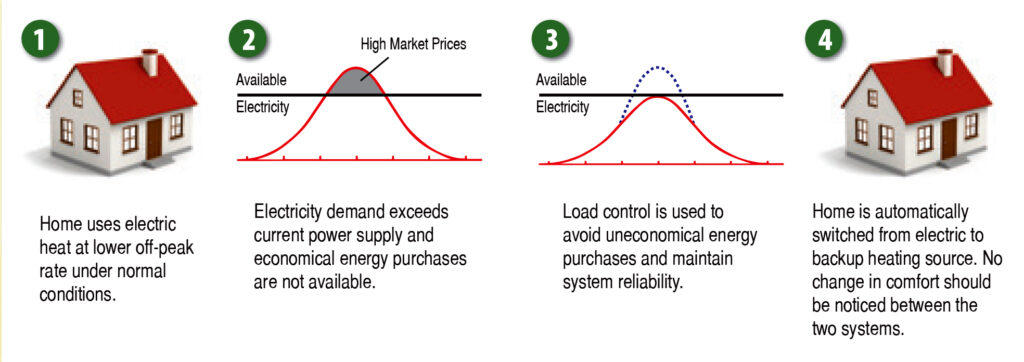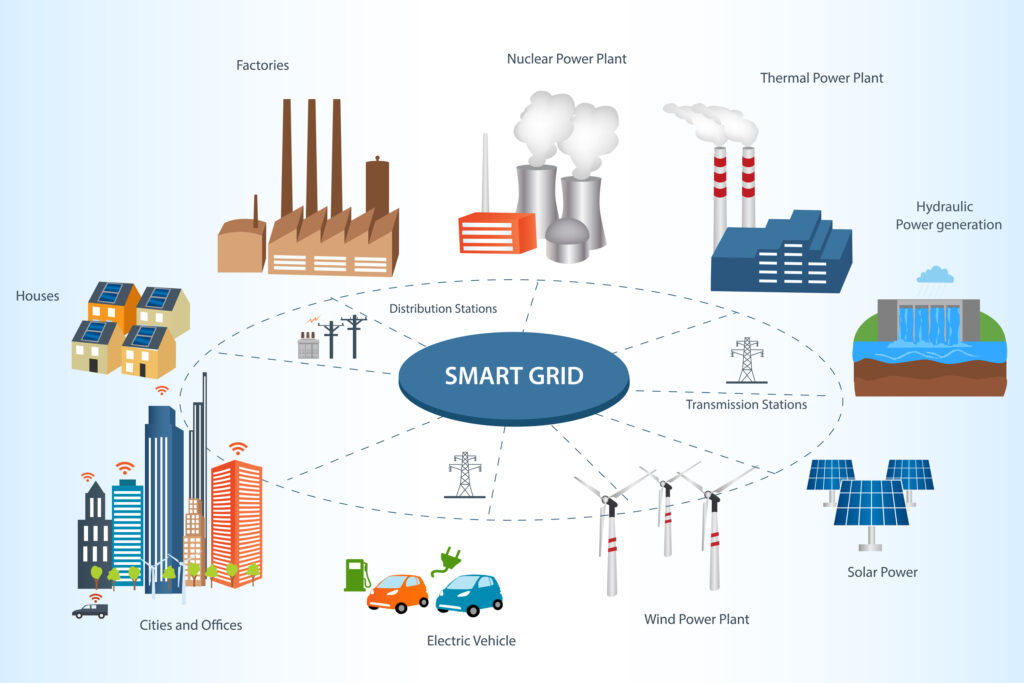
Demand response (DR) programs play a crucial role in optimizing energy usage by encouraging consumers to reduce or shift their electricity consumption during peak demand periods. By implementing DR strategies, utilities and grid operators can enhance grid reliability, reduce operational costs, and minimize the environmental impact of energy production. This document explores the benefits and implementation strategies of demand response programs, with a focus on the latest tools to generate savings while maintaining customer satisfaction.
Benefits of Demand Response Programs
- Grid Stability and Reliability: Demand response helps balance supply and demand, preventing power outages and ensuring stable grid operations.
Cost Savings for Consumers and Utilities: By reducing peak demand, utilities can lower operational costs, and consumers benefit from financial incentives and lower electricity bills.
Environmental Benefits: Lower energy consumption during peak hours reduces reliance on fossil fuel-based power plants, decreasing greenhouse gas emissions.
Improved Energy Efficiency: Demand response encourages more efficient energy use, leading to long-term sustainability.
Market Optimization: By aligning energy consumption with supply fluctuations, DR programs improve market efficiency and pricing stability.
Implementation of Demand Response Programs
- Time-of-Use (TOU) Pricing: Electricity rates vary based on demand, encouraging users to shift usage to off-peak times. Estimated cost savings: 5-15% on annual electricity bills.
- Peak Time Rebates (PTR): Customers receive financial incentives for reducing consumption during peak periods. Estimated cost savings: 10-20% per event-based participation.
- Critical Peak Pricing (CPP): Higher rates apply during peak events, prompting reduced usage. Estimated cost savings: 15-30% during peak events.
- Direct Load Control (DLC): Utilities remotely control high-energy appliances during peak hours with customer consent. Estimated cost savings: 10-25% on peak-hour electricity costs.

Smart Grid and Advanced Metering Infrastructure (AMI)
- Consumer Savings: Households can save 5-15% on electricity bills by better understanding and managing energy usage.
- Utility Savings: Utilities save on manual meter reading costs, reducing operational expenses by $10-$30 per meter annually.
- Reduction in Energy Theft: Improved monitoring reduces theft and billing errors, saving 1-3% of total electricity sales.
Automated Demand Response (ADR):
- Peak Demand Reduction: ADR can cut peak electricity demand by 10-15%, reducing the need for expensive peaking power plants.
- Cost Avoidance: Each megawatt (MW) of reduced peak demand saves utilities $500,000 – $1 million annually.
- Operational Efficiency: Reduces grid stress and lowers the need for emergency energy purchases.


Integration with Renewable Energy Sources
Demand response can complement renewable energy sources like solar and wind by shifting energy use to times when generation is high.
Energy storage solutions can further support DR by storing excess renewable energy for use during peak demand periods.
Getting the Most Out of Your Demand Response Programs
Taking a wholistic approach to demand response programs enhances the efficiency of the programs by providing utilities and businesses with real-time data analytics and automation tools. Key features include:
For the Customer – The key to a utility’s success is customer engagement, when the customer sees the advantages of the programs and get a sense that the utility is engaging them to save costs for them, then it becomes a win-win for all.
Dynamic Pricing Optimization: Automatically adjusts pricing based on demand patterns.
Customer Engagement Tools: Provides notifications, insights, and incentives to encourage participation.
Customer Analytics and Rate Design: The platform provides detailed customer analytics across various departments, facilitating informed decision-making. Its robust tariff engine allows for flexible rate modeling, enabling utilities to perform full-population rate comparisons and conduct detailed customer analyses. This ensures that rate designs are both fair and effective.
Tariff Calculation Engine: An analyst-driven tariff engine forms the foundation for all customer detail analytics. It offers flexibility for tariff modeling, speed for full-population analysis, and accuracy for detailed customer analysis.
Billing and Revenue Management: The solution streamlines the billing process, particularly for special contracts, by providing data governance and workflow management. It supports quality bill checks and shadow billing, allowing utilities to run parallel bill calculations to validate billing in real-time and ensure accuracy during rate changes.
Customer Service and Key Account Management: Configurable, browser-based dashboards offer seamless access to analytics across departments, from revenue accounting to key account management. This transparency enables account managers to perform real-time rate scenarios, evaluate mass rate changes, and effectively communicate impacts to customers, thereby enhancing customer satisfaction and trust.
For the Utility – Tools to help manage demand and improve customer response.
Load Forecasting and Predictive Analytics: Uses AI-driven analytics to predict peak demand and optimize response strategies.
Automated Demand Management: Enables utilities to implement demand response actions seamlessly.
- Integration Capabilities: Integration with other software tools such as Load Forecasting, Meter Data, Billing, Customer Service, and Rates & Tariffs. This modular approach allows utilities to tailor the solution to their specific needs, ensuring a cohesive and efficient system.
Demand response programs are essential for modern energy management, providing economic, environmental, and operational benefits. By leveraging smart technologies and data-driven insights, utilities can enhance the effectiveness of these programs. UISG’s Revenue Solution module further supports these initiatives by offering advanced tools for optimizing energy usage and improving customer engagement. Implementing demand response effectively not only ensures a more reliable energy grid but also fosters sustainability and cost efficiency for all stakeholders.